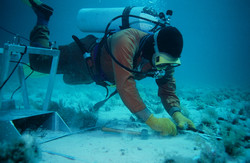Remnants of dead organisms support environmental assessment around oil platforms in the Persian (Arabian) Gulf
Changes in ecosystems can be induced by the impact of human-built structures, but when no information is available on pre-impact conditions their assessment is more difficult. The remains of dead organisms are informative on how the ecosystem was before human disturbance and can be used to assess the impacts of infrastructures such as oil and gas platforms. The EU-funded project CONSERV PALAEOBIOL (Conservation palaeobiology of oil-polluted tropical marine biota) aimed to find the effects of oil platforms on marine ecosystems in the Persian (Arabian) Gulf. The researchers conducted the study in marine areas around the Umm al Dalkh and Zakum oil fields. The team used two methods to measure the impact of the structures on the surrounding shallow-water ecosystems. First, a traditional method studying the living organisms, second, the new approach which included the empty shells, which constitute an archive of information on how the ecosystem was before the platforms were built. Moreover, the researchers measured the age of shells found near the two structures. The project found no significant impacts by the platforms in the studied oil fields and was able to reconstruct the past history of the ecosystem and the population dynamics of some bivalve molluscs. This demonstrates the power of the methods developed, which allow researchers to obtain from the remnants of dead organisms information about the dynamics of the past. CONSERV PALAEOBIOL showed that the effect of human-built structures on ecosystems can still be measured even in cases where there is no data on how the ecosystem was before the impact.







